|
Location 35000 feet somewhere over the pacific Equipment Roland R09 Handheld Only I would wake up in the middle of a ten hour flight in a darkened plane and have the first thought of “hmmm, everyone is asleep, there is no sound but the sound of the plane, where is my recorder?” As a result I captured some good general ambiance of the plane interior as it cruised, as well as the sound for the toilet door opening and closing and flushing of an aeroplane toilet. I am not sure who might ever find these useful, but as always when a chance arises I am loath to miss it. Oh and I know it was 30,000 feet because I checked the in-flight information before I went to bed. I might be crazy, but I also try to be accurate in my information
0 Comments
Location Sannohe Equipment Roland R09 Handheld Our last night in Sannohe and we do what we enjoy most here, just simply going for a walk around town in the evening. I’m glad I carried my handheld with me because the Town Works people seem to be doing some major work on the drainage systems through town. We came across a giant hole in the road that went down about 5 meters. At the bottom a large pump system was circulating the water for some reason. The sound was great so I held the R09 down the hole and got a sample. So long Sannohe, we are both really going to miss this quite friendly country town. Location Sannohe Equipment Zoom F4 Sennheiser MKH 60 Boom pole array I didn’t want to miss the chance to record some more fireworks while it was so easy to get access to them. With summer festival season very close fireworks are available everywhere very cheaply. So for the equivalent of about $20 I purchased what would be about $100 worth of fireworks in Australia As with last time the local park just down the road provided a great venue at 9pm as there is never anyone around and it’s nice and quiet. We took a bucket of water and a box to collect all the rubbish in and spent about 40 minutes enjoying lighting the fireworks and watching them go off as I recorded. We both love fireworks and we will miss the many local festivals in Japan that have great fireworks displays. Sadly fireworks in Australia are just not as well done as they are in Japan. This will also probably be one of the last things I record in Japan. We are both going to miss many things about this country, but new adventures elsewhere will keep us busy. Location Sannohe Equipment Zoom F4 Sennheiser MKH 60 Boom pole array I think I might have finally captured the other bird I have been chasing around Sannohe. I recorded the Cuckoo successfully about a month ago, but for several months I have been following a very unusual bird that appears to only be active at night. I am assuming it is a bird. I have not been able to see it, and it moves quite quickly so it is definitely flying, and the quality of the sound does not seem like an insect. The sound itself is a single whistle of about a second long around 3300Hz roughly. It varies only by about half a tone, and interestingly it really is a half tone variation. It sounds like a whistle or flute with only two notes. The other interesting thing is that I have only ever heard one of these birds in the area. The whistle has a distinctive timing to it so if it is more than one bird they have very good timing between them. I recorded a fair bit of material as I wanted to be able to get a clean recording without the frogs which started up intermittently and other insect sounds. I have not yet edited the material down to see how good a sample I have, but I believe I have enough material for a good addition to the library. Now all I have to do is find out what on earth the bird is; no one around here seems to know and in most cases aren’t even aware of its existence. Location Aomori City Equipment Zoom F4 Sennheiser MKH 60 Boom pole array As one of her last official duties in Japan, my partner needed to travel to Aomori for a farewell function. I also needed visit Aomori city as well so it was a convenient occasion for us to travel up and stay over night. While the official function was on I had about 3 hours with which to walk along the Aomori foreshore and see what I could find of interest. I recorded some fairly interesting wave sounds beneath a large concrete fishing wharf. Some good natural reverb as the waves hit the concrete was an interesting result. I needed to explain to some local fishermen exactly what I was doing and why, which was slightly tricky with my broken Japanese, but they either got my point, or just put it down to me being another crazy foreigner which pretty much amounts to the same thing. Like Hachinohe there are a lot of industrial and shipping areas along the coast near Aomori City, but because it was late in the day most of them had shut down for the week. The highlight of the walk was a large tugboat sitting idling next to one wharf. The engines on those beasts must be massive because I couldn’t get close to it without maxing out my recording levels, even with the levels set very low. In the end the sample I added to the library was one taken still about 5 meters away. The tug had a great low end rumble to its engine sounds so I was really happy to have a chance to record it. In all, I walked almost non stop for three hours recording as I came across things of interest. I probably covered about 15Km and it occurred to me that if I could spend most of my time just walking around and recording sounds it would be good way to pass the time for 10 to 20 years. The only really excellent sound for today was the tug boat, but if I get one sound of that quality and interest out of 3 hours of walking and recording then I consider it a success. There will always be lots of more common sounds that I will capture along the way, and I am never going to run out of material to add to the library, but one really good sound makes he whole day worthwhile.
Location Hachinohe Waterfront Equipment Zoom F4 Sennheiser MKH 60 Boom pole array After 2 weeks of almost full time studying 3D studio max it was good to get back into a day purely for sound recording. With only 2 weeks before we leave I wanted to return to Hachinohe and wander around the industrial and port area. Hachinohe has an extensive industrial area that ranges over most of the north of the city. I recorded various general industrial sounds like large conveyors, various pieces of plant machinery and what appeared to be the biggest rock tumbler I have ever seen. I am not exactly sure what the device was for, but it was a chamber that would have easily been 2 or 3 meters in diameter and about 20 meters long. By the sounds it was making while operating the rocks or objects inside were of considerable size. I got to experience Japans lack of safety procedures again today. While driving around the docks area I discovered a ship being loaded up with scrap metal. I think the Japanese ship a lot of their scrap metal to Korea. The ship was being loaded by two claw cranes on the docks. I got close enough to record some excellent material of metal movement and impacts. The reality was however that I shouldn't have been able to get even remotely that close to this sort of process. I guess that sounds a bit hypercritical commenting on something that I gained an advantage from, but it was strange. I now have a better understanding as to why most western countries have so many safety regulations in regard to industry. I also visited an island temple just of the coast near the city which has a large population of very noisy seagulls. There were literally hundreds of them on the island and surrounding area. My attempts on the way home to record some flags blowing in the wind did not turn out very well, and I will have to look into a better way to capture the sound without recording too much wind interference. The final surprise for the day was returning home to discover our neighbors had gotten themselves a new kitten which they appear to have left at home on its own. It was sitting at a second floor window meowing constantly. I think it was just lonely, but it was worth recording. I felt bad that I couldn’t comfort the cat itself, but short of breaking into the house there was nothing I could do. A good selection of sounds for the day, and very happy to be back to working on sound material more regularly. Location Mount Osoresan Equipment Zoom F4 Sennheiser MKH 60 Boom pole array With only a few weeks left in Japan we wanted to revisit Mt. Osoresan one last time. Mt Osoresan translates to mean Mount Fear, and it is the second most holy place in Japan after Mt Fuji. There is a large temple complex there and many believe it is where many spirits go when they die. The mountain itself is an inactive volcano but there is still a lot of activity from hot springs, steam outlets and sulfur everywhere. The trip up the mountain supplied some good opportunities to record some more Japanese bird sounds as well as the first instances of the summer insects. There are various Crickets and Cicadas that are active during Japanese summertime, but the species vary greatly across the island. The sounds of the insects in the south of the country are completely different from those in the middle of the country and again in the north of the country. 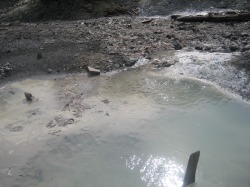 Osoresan Volcanic Pool Once we got to the temple complex itself I was able to record various samples of gases escaping the ground under pressure bubbly pools, and other interesting volcanic activities. Some of the sound sources were very quiet and were tricky to isolate, however most of the Japanese visitors to Osoresan are there only for the temple area, so it was possible to move away from the crowds and get some good material. Visually Osoresan looks far more appropriate when it's overcast and raining, maybe it complements the “place of the dead” feel, but having a clear sunny day was far more useful for recording quiet sounds. Osoresan is the second most holy place in Japan and many people come here to pray for the souls of young children. There are dozens of statues and little idols dedicated to children who have passed away. There are also dozens of brightly colored pinwheels that blow in the wind constantly. I guess these are to cheer the spirits of the departed children. I found the area very peaceful without being ominous. Many Japanese seem to be very uncomfortable with the place and were surprised we went there. The contrast between the bleak gray volcanic crater and the brightly colored children s toys and pinwheels is really interesting. Osoresan is a place where people come to visit the spirits of departed children and as such they leave toys and snacks that children would love. The pinwheels are very common and add a unusual feeling to the atmosphere as they spin in the wind. It is places like Osoresan that really add to the feeling of mystery in Japan. A country with amazing modern technology living side by side with centuries old traditions and beliefs. Location Sannohe Equipment Zoom F4 Sennheiser MKH 60 Boom pole array As part of the process to extend the non metallic sections of the materials library I set out to record a series of glass breaking samples today. Having access to a remote unused depot in a quiet spot on a mountain certainly helped the process. Using some discarded mirrors about 50cm square I recorded various samples of glass breaking through being dropped and impacted upon. It took a few shots to get the levels exactly right but I captured some good material. Two things I learnt from this session. Firstly I decided not to break all of the 12 plates of glass I had with me. I thought it might be a good idea to save some of them for a second session just in case there were any issues with the material. While it is possible to check the material on site, it is often not until you return to the studio that you discover issues with levels, unknown sound contamination and various other unexpected issues. Especially when dealing with a limited resource (I only had 12 plates to smash) it may be wise to plan for 2 sessions allowing you to redo anything that didn’t work. In this case the material was good, but the second session I am going to use the remaining plates to simulate things piercing glass. I will reinforce some of the plates with tape and then use projectiles to punch through the glass hopefully getting a good simulation of bullets breaking glass. The second thing I learnt is that glass takes a long time to clean up. I took along several containers to collect all the shrapnel in and a brush and shovel to help me collect the pieces. Glass however literally explodes when it breaks and 70% of my time was spent after recording hunting down glass shards. The glass was then added to the recycling pile for the next collection. It’s also a really good idea to wear protective gear when dealing with glass. I did and was glad of it. Location
Sannohe Equipment Zoom F4 Sennheiser MKH 60 Boom pole array After four or five days straight of rain (courtesy of the wet season) it was nice to have some clear weather so I could record something other than rain. Unfortunately everyone else seemed to be making the most of the good weather as well. I did manage to record a few stone material sounds, but there was a lot of noise coming from the sports park just down the road. The local elementary schools were having an athletics event day. Not wanting to pass up an opportunity I managed to record a couple of races to get both the starters gun as well as some passing sounds of people sprinting, as well as lots of kids cheering the events. Location Sannohe Equipment Zoom F4 Sennheiser MKH 60 Boom pole array One of the best things about the rainy season is the frequent thunder storms. Staying in a quiet area of a small country town means often good recordings can be made without traffic and people contaminating the sounds, so when a thunderstorm comes through it is well worth setting up a microphone just to see what you get. I usually setup my usual rig upstairs, pointing out an open window. This way I can continue to work on my PC downstairs without worrying that I will contaminate my own recordings. Today I did so and was rewarded with some very good thunder sounds as the storm passed directly overhead. The sound that thunder makes changes considerably with your proximity to its source. As a general rule distant thunder will be just the low frequency rumblings. As the storm and the lightning gets closer to your position you should hear more high frequency elements of the sound. The sound of lightning breaking directly overhead sounds like the sky has just been torn open. The volume and range of frequencies are extreme and it is an incredible sound to try and capture. The trick is trying to set your input levels to get a good recording of the distant thunder but also to make sure it doesn’t peak out when the storm moves closer. |
AuthorStephan Schütze has been recording sounds for over twenty years. This journal logs his thoughts and experiences Categories
All
Archives
April 2019
|
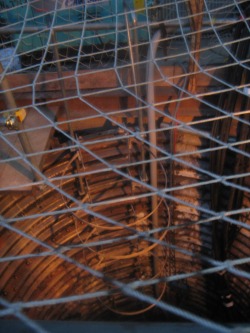
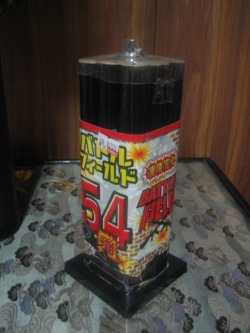
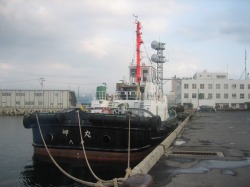
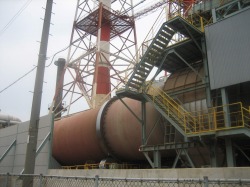
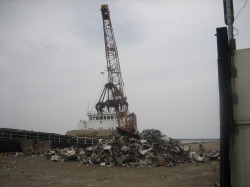
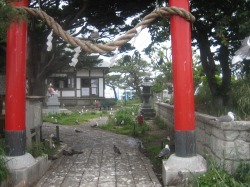
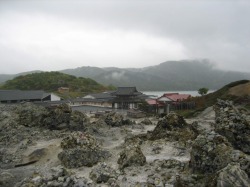
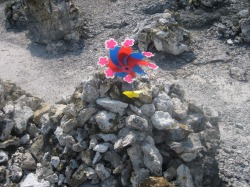
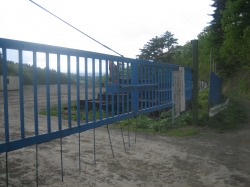
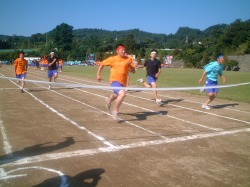
 RSS Feed
RSS Feed
